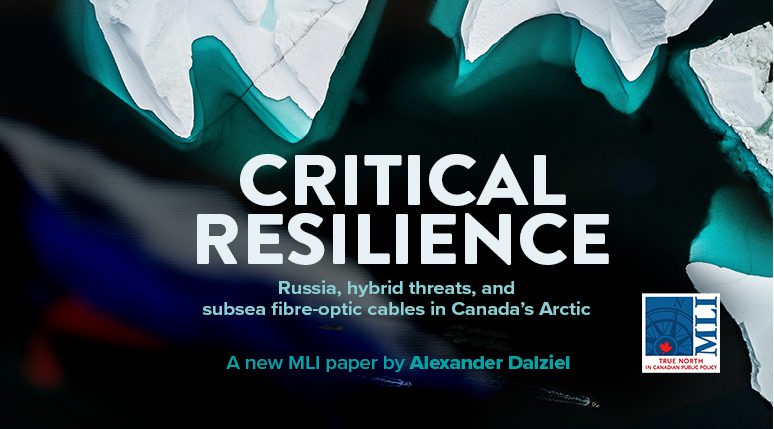OTTAWA, ON (June 20, 2024):
Many Canadians may not even know what a subsea fibre-optic cable is, but as international information super-highways, subsea cables are critical to our everyday lives.
Canada will install additional subsea cables in the Arctic over the next 10 years – but can we actually protect this vital infrastructure against threats posed by malicious global actors?
In Critical resilience – Russia, hybrid threats, and subsea fibre-optic cables in Canada’s Arctic, Senior Fellow Alexander Dalziel sheds light on the vulnerabilities of submarine fibre-optic cables in Canada’s Arctic, emphasizing the need for early-stage resilience to deter and mitigate threats.
Dalziel notes that a significant challenge, revealed in case studies from the Nordic region, lies in the difficulty in distinguishing between accidental and intentional damage to critical subsea infrastructure.
For Dalziel, the solution lies in improving situational awareness and developing response plans to mitigate risks and ensure that threats remain a low probability. Employing a “whole-of-society” approach that involves all levels of government, Inuit, First Nations, and business and expert communities can secure this backbone digital infrastructure.
“We can no longer afford to be complacent about national security in the Arctic,” Dalziel warns.
“The time to think long-term about protecting [subsea cables] from the range of threats they will face is now.”
To learn more, read the full paper here:
Alexander Dalziel is a MLI senior fellow with over 20 years of experience in Canada’s national security community. Previously, he held positions with the Privy Council Office, Canada School of Public Service, Department of National Defence, and Canada Border Services Agency.
For further information, media are invited to contact:
Skander Belouizdad
Communications Officer
613-482-8327 x111
skander.belouizdad@macdonaldlaurier.ca







